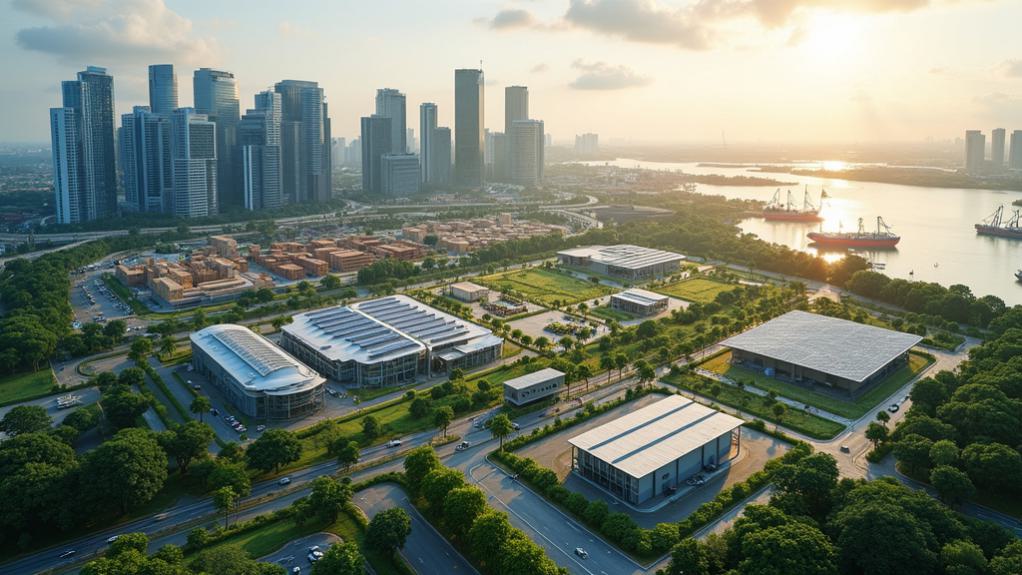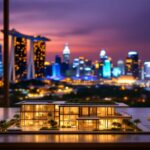How Singapore plans to redefine its urban landscape is becoming increasingly apparent through the ambitious 2025 Master Plan, which outlines an all-inclusive strategy for decentralized growth across the city-state’s northern, eastern, and western regions. The plan proposes a significant shift away from centralized development, with substantial investments in regional business hubs like Bishan, which will rival Paya Lebar Central in scale and economic significance. Community hubs modeled after Our Tampines Hub will emerge in Sengkang and Woodlands North, while existing developments in Tampines and Punggol Digital District will undergo further expansion to strengthen the decentralization strategy.
Singapore’s 2025 Master Plan envisions decentralized growth with regional hubs transforming the island’s urban fabric beyond its traditional core.
Industrial transformation features prominently in the Master Plan, with authorities conducting a thorough review of land use zoning guidelines to facilitate more flexible, mixed-use developments. Older industrial estates will be systematically repurposed to accommodate evolving economic sectors with an emphasis on high-value, technology-driven industries, moving decisively away from mono-use zoning regulations that have historically limited development options. This policy shift aims to create adaptable spaces capable of attracting both multinational corporations and emerging startups. The Lakeside Drive Government Land Sales site, spanning 1.39 hectares with plans for approximately 575 residential units, exemplifies this mixed-use approach within the Jurong Lake District. The plan introduces new business-white sites around key transport nodes in Jurong and Tuas industrial estates to further support economic growth.
The Northern Gateway will be established as a major industrial and commercial hub specializing in high-value manufacturing, supported by the Johor Bahru-Singapore Rapid Transit System Link scheduled for completion by 2026. Simultaneously, the Eastern Gateway will expand with Changi Airport Terminal 5, increasing the facility’s passenger capacity by 50 million to a total of 140 million annually, complemented by the development of Changi Aviation Park and Changi City to strengthen Singapore’s global connectivity infrastructure.
In the west, Tuas Port is positioned to become the world’s largest fully automated container port by the 2040s, anchoring new industrial precincts designed for manufacturing sectors dependent on international trade. The plan includes approximately 80,000 new units of public and private residential housing islandwide to support the growing population. Residential development will occur strategically across Dover, Defu, Newton, Paterson, Greater one-north, and near Paya Lebar Airbase, with transit-oriented planning to integrate housing with workplaces, leisure facilities, and green spaces, minimizing commute times while maximizing accessibility throughout the island.





